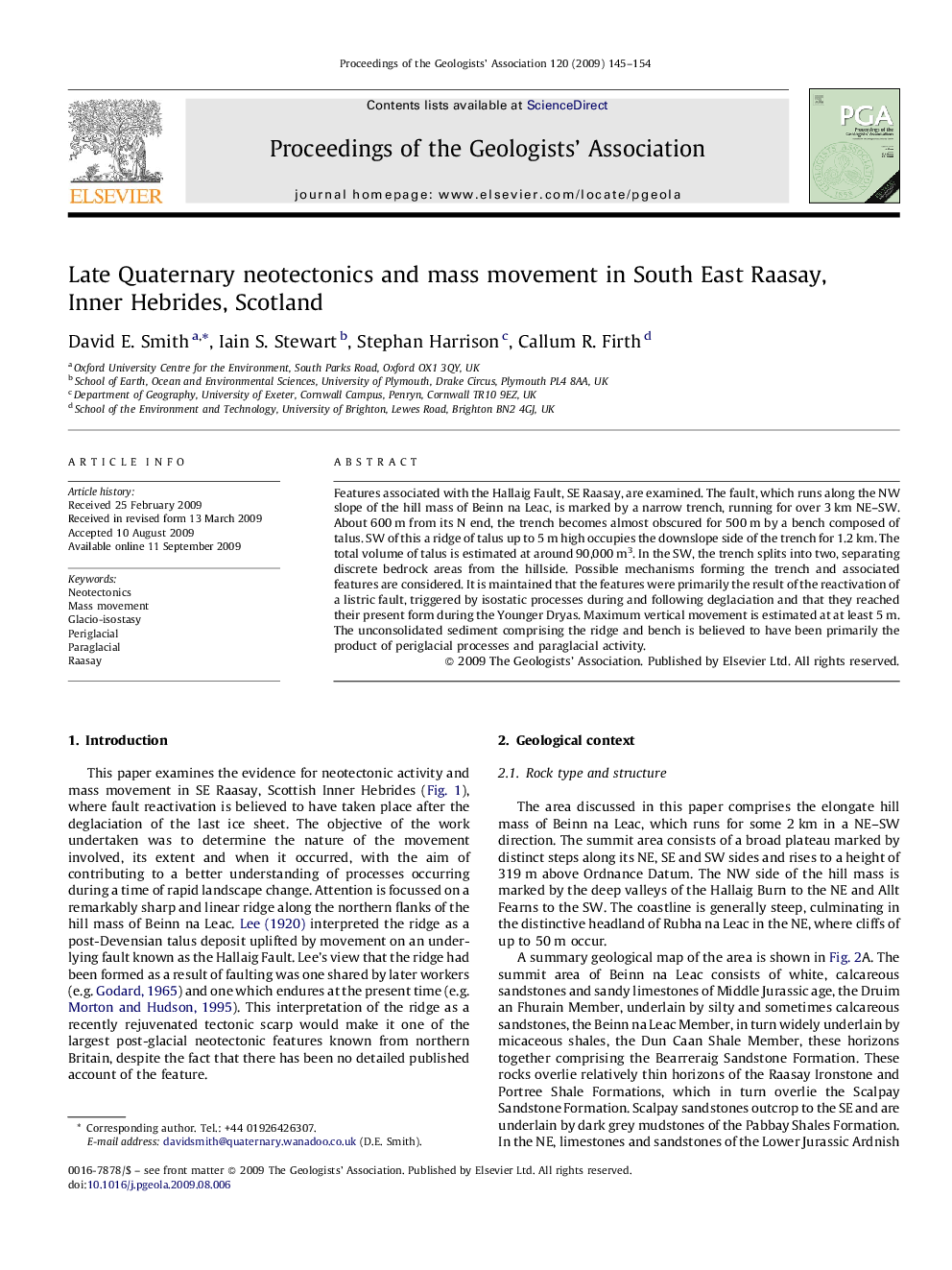| Article ID | Journal | Published Year | Pages | File Type |
|---|---|---|---|---|
| 4735146 | Proceedings of the Geologists' Association | 2009 | 10 Pages |
Features associated with the Hallaig Fault, SE Raasay, are examined. The fault, which runs along the NW slope of the hill mass of Beinn na Leac, is marked by a narrow trench, running for over 3 km NE–SW. About 600 m from its N end, the trench becomes almost obscured for 500 m by a bench composed of talus. SW of this a ridge of talus up to 5 m high occupies the downslope side of the trench for 1.2 km. The total volume of talus is estimated at around 90,000 m3. In the SW, the trench splits into two, separating discrete bedrock areas from the hillside. Possible mechanisms forming the trench and associated features are considered. It is maintained that the features were primarily the result of the reactivation of a listric fault, triggered by isostatic processes during and following deglaciation and that they reached their present form during the Younger Dryas. Maximum vertical movement is estimated at at least 5 m. The unconsolidated sediment comprising the ridge and bench is believed to have been primarily the product of periglacial processes and paraglacial activity.
